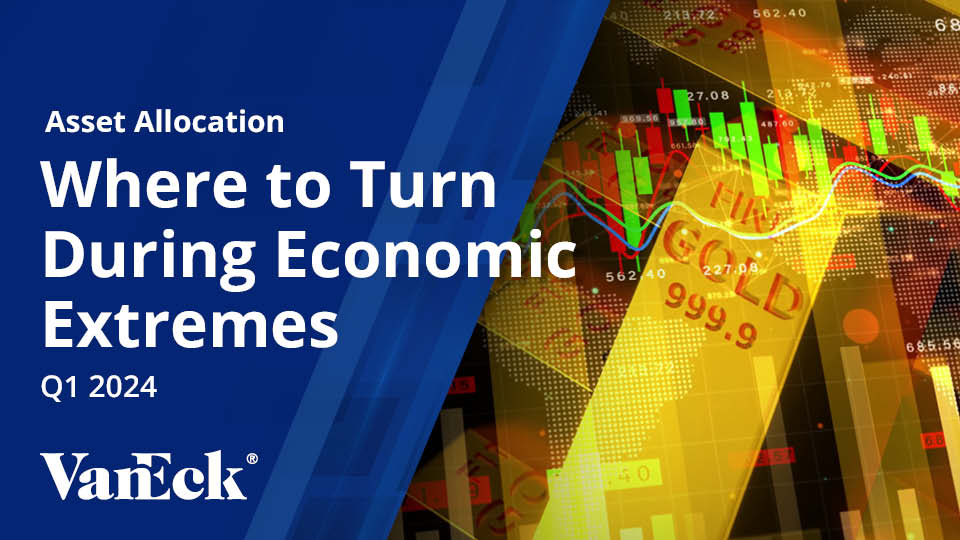Powell’s Perpetual Pivot: Impact on Real Assets
September 02, 2022
Read Time 4 MIN
The Jackson Hole Symposium concluded and left the markets rattled. It appears that the U.S. Federal Reserve (Fed) may have finally come to terms with the inflation problem at hand, and that spells trouble for the markets. It also marks one of many pivots from the Fed, and it is unlikely to be it's last.
It started with Fed Chair Jerome Powell being dismissive of inflation.
December 16, 2020: “I think you have to be honest with yourself about inflation these days. There are significant disinflationary pressures around the world. And there have been for a while,” he said. “It’s not going to be easy to have inflation move up.”
Then, Powell pivoted to “high inflation is here but only temporary.”
August 27, 2021, Jackson Hole Symposium: “Inflation at these levels is, of course, a cause for concern. But that concern is tempered by a number of factors that suggest that these elevated readings are likely to prove temporary.”
Powell then calmed the markets with its message of a soft landing.
May 4, 2022: “We have a good chance to have a soft or softish landing.”
And most recently, Powell pivoted away from the soft landing and told us to prepare for pain.
August 26, 2022, Jackson Hole Symposium: “While higher interest rates, slower growth and softer labor market conditions will bring down inflation, they will also bring some pain to households and businesses. These are the unfortunate costs of reducing inflation.”
Soft landings, by design, are not supposed to be painful, and this is what has the markets rumbling. Unfortunately, we believe that the final and most painful pivot has yet to come. That is when the Fed eases its fight against inflation and allows inflation to run above 2% for an extended period of time. This view is underpinned by the growing global debt bubble, which requires more and more stimulus to keep it from bursting. All attempts to reduce accommodative policies, as we are experiencing today with higher interest rates and a smaller Fed balance sheet, will likely only be short-lived and ineffective.
I think Milton Freedman said it best: “There’s only one way to stop inflation and that’s by having the government create less money and spend less money.” Yet, the government continues to overspend. Look no further than the recent student loan forgiveness program and the Inflation Reduction Act.
Our view is simple: The inflationary forces will continue to overwhelm the disinflationary ones, albeit to a lesser degree, and real assets, as natural beneficiaries of inflation, will continue to outperform.
There remains, of course, another question: Has inflation peaked? Probably. But, we think that this is the wrong question to ask.
We believe that inflation likely peaked because new money creation and federal overspending are way below the absurd levels of the previous two years. In addition, future attempts at ludicrous spending initiatives will be more heavily scrutinized.
Knowing how long it will take for all of the excess liquidity to work its way through the system is interesting but likely unhelpful. Time will tell. And one month of slowing inflation—especially when it is being driven by volatile components— while “core” inflation continues to march higher, offers few hints.
The right question to ask is: When will prices return to “normal”? Recent history will define normal as inflation of 2% or less. This would likely signal a return back to the status quo of ridiculously low interest rates, growth outperforming value, and a continuation of the seemingly never-ending bull market in bonds.
Alternatively, it is worth considering that the last decade may be the outlier, excluding the past year. The average inflation rate since the inception of the CPI in 1913 is in excess of 3%. It is reasonable to conclude that, at minimum, we will revert to the long-term average. And if that’s the case, the investments that are best positioned to outperform for the foreseeable future will likely be different from the ones that led the market higher in the past decade.
The VanEck Inflation Allocation ETF (RAAX), as a diversified inflation-fighting solution, in our view, presents a compelling investment proposition whether the Fed can quell inflation or not. On the one hand, persistent inflation will allow for further outperformance of the commodity and natural resource equity allocations. Eventually, gold and gold equities, which have lagged during the initial phase of the inflationary cycle, are likely to participate in the rally and outperform other real asset sectors, as has been evidenced in previous inflation periods.
On the other hand, a slowing economy, which often leads to lower interest rates, may be favorable to our REIT, infrastructure, and once again gold (and gold equity) positions. Historically, these assets have been attractive during falling interest rate regimes.
The wildcard, of course, is a swift and harsh economic collapse, such as the ones experienced in 2001, 2008 and 2020, which leads to a repricing of all risk assets. RAAX, on a relative basis, has the ability to generate strong performance due to its diversification, large allocations to defensive assets, such as gold and global infrastructure, and its ability to adapt to different economic regimes.
In closing, we believe RAAX offers an inflation hedge with compelling risk reward for a myriad of possible future price and growth outcomes.
To receive more Asset Allocation insights, sign up in our subscription center.
Related Topics
Related Insights
February 28, 2024
February 22, 2024
December 19, 2023
Important Disclosures
This is not an offer to buy or sell, or a solicitation of any offer to buy or sell any of the securities mentioned herein. The information presented does not involve the rendering of personalized investment, financial, legal, or tax advice. Certain statements contained herein may constitute projections, forecasts and other forward looking statements, which do not reflect actual results. Information provided by third-party sources are believed to be reliable and have not been independently verified for accuracy or completeness and cannot be guaranteed. Any opinions, projections, forecasts, and forward-looking statements presented herein are valid as of the date of this communication and are subject to change without notice. The information herein represents the opinion of the author(s), but not necessarily those of VanEck.
Consumer Price Index is an index of the variation in prices paid by typical consumers for retail goods and other items. Bloomberg Barclays U.S. Aggregate Bond Index is a broad-based benchmark that measures the investment grade, U.S. dollar-denominated, fixed-rate taxable bond market. The index includes Treasuries, government-related and corporate securities, MBS (agency fixed-rate and hybrid ARM pass-throughs), ABS and CMBS (agency and non-agency). Bloomberg Commodity Index is a broadly diversified index that tracks the commodity markets through commodity futures contracts and is made up of exchange-traded futures on physical commodities, which are weighted to account for economic significance and market liquidity. S&P 500 Index is widely regarded as the best single gauge of large-cap U.S. equities. The index is a float-adjusted, market-cap-weighted index of 500 leading U.S. companies from across all market sectors including information technology, telecommunications services, utilities, energy, materials, industrials, real estate, financials, health care, consumer discretionary, and consumer staples. Energy Select Sector Index seeks to provide an effective representation of the energy sector of the S&P 500 Index. The Index includes companies from the following industries: oil, gas and consumable fuels; and energy equipment and services.
Benchmark index returns are not Fund returns and do not reflect any management fees or brokerage expenses. Certain indices may take into account withholding taxes. Investors cannot invest directly in the Index. Returns for actual Fund investors may differ from what is shown because of differences in timing, the amount invested and fees and expenses. Index returns assume that dividends have been reinvested.
The S&P 500 Index is a product of S&P Dow Jones Indices LLC and/or its affiliates and has been licensed for use by Van Eck Associates Corporation. Copyright © 2021 S&P Dow Jones Indices LLC, a division of S&P Global, Inc., and/or its affiliates. All rights reserved. Redistribution or reproduction in whole or in part are prohibited without written permission of S&P Dow Jones Indices LLC. For more information on any of S&P Dow Jones Indices LLC’s indices please visit www.spglobal.com/spdji/en/. S&P® is a registered trademark of S&P Global and Dow Jones® is a registered trademark of Dow Jones Trademark Holdings LLC. Neither S&P Dow Jones Indices LLC, Dow Jones Trademark Holdings LLC, their affiliates nor their third party licensors make any representation or warranty, express or implied, as to the ability of any index to accurately represent the asset class or market sector that it purports to represent and neither S&P Dow Jones Indices LLC, Dow Jones Trademark Holdings LLC, their affiliates nor their third party licensors shall have any liability for any errors, omissions, or interruptions of any index or the data included therein.
An investment in the VanEck Inflation Allocation ETF (the “Fund”) may be subject to risks which include, among others, in fund of funds risk which may subject the Fund to investing in commodities, gold, natural resources companies, MLPs, real estate sector, infrastructure, equities securities, small- and medium-capitalization companies, foreign securities, emerging market issuers, foreign currency, credit, interest rate, call and concentration risks, derivatives, cryptocurrency, cryptocurrency tax, all of which may adversely affect the Fund. The Fund may also be subject to affiliated fund, U.S. Treasury Bills, subsidiary investment, commodity regulatory (with respect to investments in the Subsidiary), tax (with respect to investments in the Subsidiary), risks of ETPs, liquidity, gap, cash transactions, high portfolio turnover, model and data, management, operational, authorized participant concentration, no guarantee of active trading market, trading issues, market, fund shares trading, premium/discount and liquidity of fund shares, and non-diversified risks. Foreign investments are subject to risks, which include changes in economic and political conditions, foreign currency fluctuations, changes in foreign regulations, and changes in currency exchange rates which may negatively impact the Fund's returns. Small- and medium-capitalization companies may be subject to elevated risks.
Investing involves substantial risk and high volatility, including possible loss of principal. An investor should consider the investment objective, risks, charges and expenses of the Fund carefully before investing. To obtain a prospectus and summary prospectus, which contains this and other information, call 800.826.2333 or visit vaneck.com. Please read the prospectus and summary prospectus carefully before investing.
© Van Eck Securities Corporation, Distributor, a wholly owned subsidiary of Van Eck Associates Corporation.
Related Funds
Important Disclosures
This is not an offer to buy or sell, or a solicitation of any offer to buy or sell any of the securities mentioned herein. The information presented does not involve the rendering of personalized investment, financial, legal, or tax advice. Certain statements contained herein may constitute projections, forecasts and other forward looking statements, which do not reflect actual results. Information provided by third-party sources are believed to be reliable and have not been independently verified for accuracy or completeness and cannot be guaranteed. Any opinions, projections, forecasts, and forward-looking statements presented herein are valid as of the date of this communication and are subject to change without notice. The information herein represents the opinion of the author(s), but not necessarily those of VanEck.
Consumer Price Index is an index of the variation in prices paid by typical consumers for retail goods and other items. Bloomberg Barclays U.S. Aggregate Bond Index is a broad-based benchmark that measures the investment grade, U.S. dollar-denominated, fixed-rate taxable bond market. The index includes Treasuries, government-related and corporate securities, MBS (agency fixed-rate and hybrid ARM pass-throughs), ABS and CMBS (agency and non-agency). Bloomberg Commodity Index is a broadly diversified index that tracks the commodity markets through commodity futures contracts and is made up of exchange-traded futures on physical commodities, which are weighted to account for economic significance and market liquidity. S&P 500 Index is widely regarded as the best single gauge of large-cap U.S. equities. The index is a float-adjusted, market-cap-weighted index of 500 leading U.S. companies from across all market sectors including information technology, telecommunications services, utilities, energy, materials, industrials, real estate, financials, health care, consumer discretionary, and consumer staples. Energy Select Sector Index seeks to provide an effective representation of the energy sector of the S&P 500 Index. The Index includes companies from the following industries: oil, gas and consumable fuels; and energy equipment and services.
Benchmark index returns are not Fund returns and do not reflect any management fees or brokerage expenses. Certain indices may take into account withholding taxes. Investors cannot invest directly in the Index. Returns for actual Fund investors may differ from what is shown because of differences in timing, the amount invested and fees and expenses. Index returns assume that dividends have been reinvested.
The S&P 500 Index is a product of S&P Dow Jones Indices LLC and/or its affiliates and has been licensed for use by Van Eck Associates Corporation. Copyright © 2021 S&P Dow Jones Indices LLC, a division of S&P Global, Inc., and/or its affiliates. All rights reserved. Redistribution or reproduction in whole or in part are prohibited without written permission of S&P Dow Jones Indices LLC. For more information on any of S&P Dow Jones Indices LLC’s indices please visit www.spglobal.com/spdji/en/. S&P® is a registered trademark of S&P Global and Dow Jones® is a registered trademark of Dow Jones Trademark Holdings LLC. Neither S&P Dow Jones Indices LLC, Dow Jones Trademark Holdings LLC, their affiliates nor their third party licensors make any representation or warranty, express or implied, as to the ability of any index to accurately represent the asset class or market sector that it purports to represent and neither S&P Dow Jones Indices LLC, Dow Jones Trademark Holdings LLC, their affiliates nor their third party licensors shall have any liability for any errors, omissions, or interruptions of any index or the data included therein.
An investment in the VanEck Inflation Allocation ETF (the “Fund”) may be subject to risks which include, among others, in fund of funds risk which may subject the Fund to investing in commodities, gold, natural resources companies, MLPs, real estate sector, infrastructure, equities securities, small- and medium-capitalization companies, foreign securities, emerging market issuers, foreign currency, credit, interest rate, call and concentration risks, derivatives, cryptocurrency, cryptocurrency tax, all of which may adversely affect the Fund. The Fund may also be subject to affiliated fund, U.S. Treasury Bills, subsidiary investment, commodity regulatory (with respect to investments in the Subsidiary), tax (with respect to investments in the Subsidiary), risks of ETPs, liquidity, gap, cash transactions, high portfolio turnover, model and data, management, operational, authorized participant concentration, no guarantee of active trading market, trading issues, market, fund shares trading, premium/discount and liquidity of fund shares, and non-diversified risks. Foreign investments are subject to risks, which include changes in economic and political conditions, foreign currency fluctuations, changes in foreign regulations, and changes in currency exchange rates which may negatively impact the Fund's returns. Small- and medium-capitalization companies may be subject to elevated risks.
Investing involves substantial risk and high volatility, including possible loss of principal. An investor should consider the investment objective, risks, charges and expenses of the Fund carefully before investing. To obtain a prospectus and summary prospectus, which contains this and other information, call 800.826.2333 or visit vaneck.com. Please read the prospectus and summary prospectus carefully before investing.
© Van Eck Securities Corporation, Distributor, a wholly owned subsidiary of Van Eck Associates Corporation.



